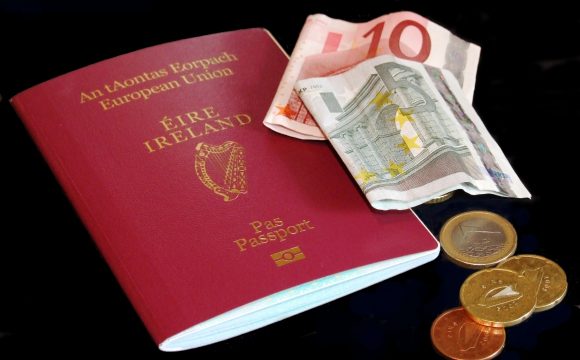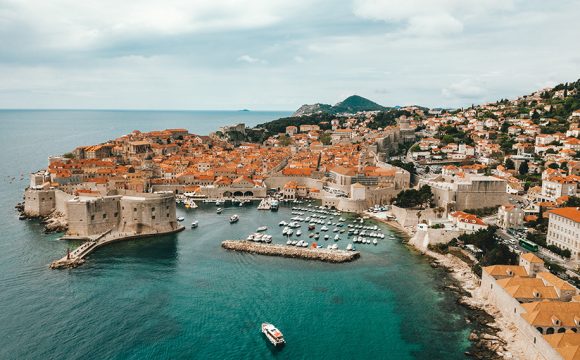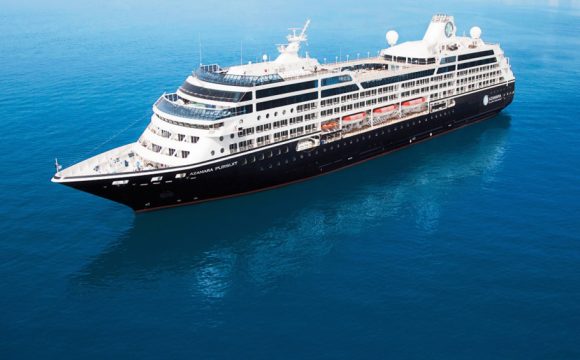Brits seeking sunshine on their European holidays this summer have been told the best and worst countries to visit based on weather patterns.
Travel experts at Panache Cruises have researched the best and worst times to visit the ten most popular European countries for Britons currently planning their holidays.
If travellers fail to pay attention to the local forecast or research beforehand which months to avoid, they could be met with extreme heat, heavy rain or snow storms once they step off the plane.
Even worse, it could mean a holiday cancelled altogether with tourists unable to travel abroad in extreme cases.
Most of us are looking to jet away somewhere sunny and hot – destinations like Greece and Portugal are perfect summer holidays for sun seekers, with long daylight hours and highs of 30 degrees.
But tourists need to be careful to not book a trip away during the scorching hot days in the middle of the year – for several weeks at a time countries such as Italy and Turkey, will often hit highs of 40 and 50 degrees, respectively.
Popular tourist hotspots such as Poland, Romania and Germany often see the temperature drop well below freezing during the winter months, and sometimes even into spring.
It’s important to check historic weather data to know exactly when it gets chiller in each country to avoid getting dangerously caught out in the cold.
James Cole, founder of Panache Cruises said: “I think it’s essential to know what kind of weather each country has before planning your trip away.
“You may just think you’re landing in a sunny country like Spain or Greece where the temperature is going to be pleasantly warm. But extreme heat often comes unexpectedly across Europe and is significantly hotter than it often is in Britain, meaning the weather can easily ruin or even cancel your holiday.
“Those who are looking to go away over the winter months should also be careful when they decide to book – some countries such as Germany and Poland may be popular for snow sports but with temperatures often dropping well below freezing, travellers need to be careful whilst planning holidays.
“Climate can have a massive impact on our holidays – unpredictable weather can quickly halt any planned activities or days out. Or, worst of all, flights or ferry crossings to even get to your destination may be cancelled meaning you can’t even get to your holiday.
“Luckily for the most part, countries across Europe regularly have weeks full of lovely weather and warm spells for holidaymakers to enjoy. But it’s still important to check forecasts regularly to make the most out of the weather.
“Cruising offers many advantages and you can easily find an itinerary which makes the very best of the available weather. From luxury river cruises in central Europe to expedition cruises through the high Arctic, cruising allows you to explore each region in total comfort at the best times of year.”
Sunny skies or rainy days? The best and worst times to visit Europe researched by Panache Cruises
- Spain
Although there are a few different climates in Spain depending on which region you go to, March – May time is an ideal time to visit. The Spring weather means the humidity is warm but not overwhelmingly hot, with average highs of 24℃. However, for those wanting to enjoy the heat Spain is known for, be aware that travelling in the off peak months of January or February will be significantly colder at around 6℃.
- France
France has many different types of holidays on offer – such as the warmer South best enjoyed during the summer months with an average of 28℃ despite some infrequent seasonal showers. However, for those who are looking for a ski holiday on the slopes, January offers off peak pricing, plentiful snowfall with the ideal colder weather.
- Portugal
Weather in Portugal is spectacular, with over 3000 hours of sunlight every year, this tourist hotspot is one of the top countries in Europe with the highest number of annual sunny days. However, the winter months (particularly November – February) are best avoided because of the low average temperatures of around 8℃ and the frequent heavy showers across the country. Portugal has a long summer, from May until September, where the weather generally doesn’t drop below 25℃.
- Greece
Greece is known for its hot summers with beautiful sunsets throughout the summer months with the temperature reaching into the mid 30s in both the north and south and remains warm until October time. However, visitors wanting to soak up the sun should avoid travelling during November – March, where the cold weather can reach below freezing, and is matched with heavy rainfall and cool air further bringing down the temperature for tourists.
- Ireland
Just over the waters from Britain, Ireland is a popular destination for those looking to see the stunning landscapes over a pint of cold Guinness. However the weather is often unpredictable and often doesn’t reach above 25℃. The autumn and winter months are infamous for heavy rainfall days on end, so although the prices of flights and accommodation will be significantly cheaper, visiting during the longer summer and spring months is much more ideal.
- Poland
Unlike most other European countries, visiting Poland during the summer will often mean wet weather despite pleasant warmth. Poland is best explored during late spring and early autumn when the rainfalls become much less infrequent and temperatures reach up to 20℃. But for those looking to travel to a country with beautiful snowfall, Poland is a great choice during the winter months. With a long winter, temperatures often drop to -12℃ and is ideal for snowsports and a perfectly white Christmas.
- Italy
Northern Italy is typically colder than the south, but both regions have very pleasant weather during the summer and spring months. Summer weather can bring highs of up to 40℃ during peak times making northern Italy perfect for those looking to soak up the sun. Yet in the winter temperatures can drop down to -5℃ for weeks on end, so booking a trip at the end of the year is a bad idea else risk getting caught in the dry, cold weather.
- Romania
The Carpathias mountainous area towards the southeast of Romania sees temperatures drop to an average of -15℃ with severe weather warnings often in place throughout the winter. Spring time during March and early May brings warm temperatures across the country with averages of 22℃, but towards the middle of the year when the heat gears up some tourists may find Romania uncomfortably hot at around 35℃ in the far east, low lying parts of the country.
- Germany
For many tourists, Germany is best enjoyed when the days are long and warm, throughout June until September time. Yet early spring months can bring unpredictable showers, hail, rainstorms or even snow. Yet for those wanting a white winter or skiing holiday, Germany is a great pick as throughout the colder months (December to February), temperatures drop well below freezing at around -10℃ on average, with heavy snowfalls frequent in the mountainous regions.
- Turkey
For most Brits, travelling to Turkey during the late summer months during July and August is best avoided because of the scorching heat which sweeps the country each year. Temperatures usually rise to just under 50℃ making it unbearable for most. Travelling during the spring time tourists will see temperatures reaching 25℃ on average. Going to Turkey just before the peak summer months hit is ideal as temperatures across the weather can often be unpredictable throughout the hottest and coldest parts of the year.
















